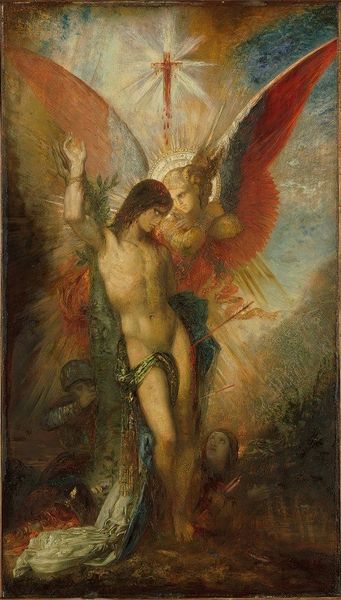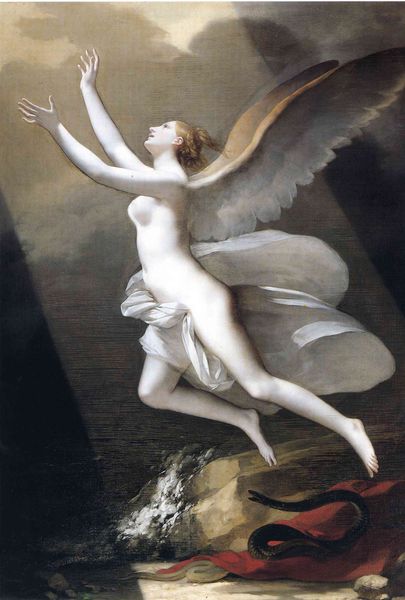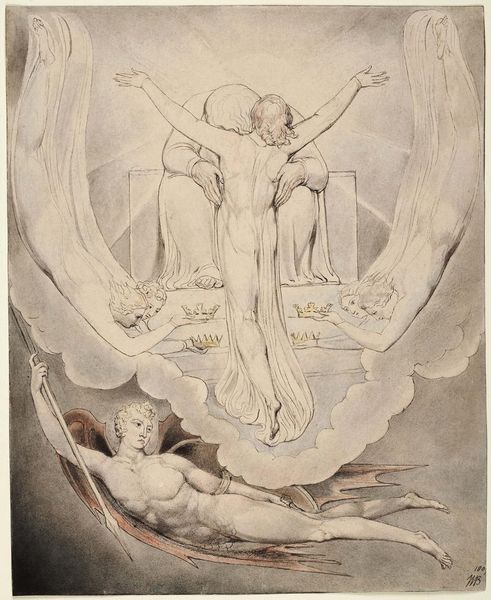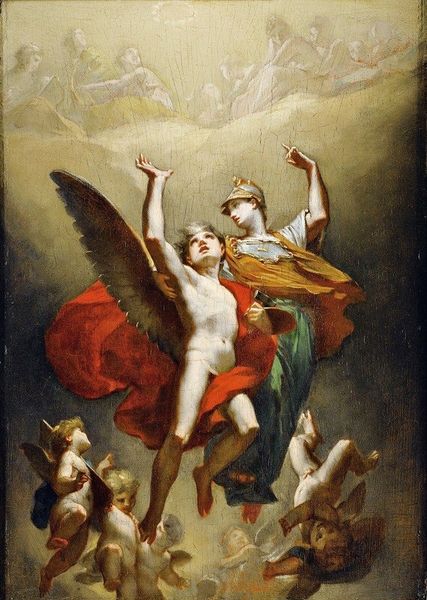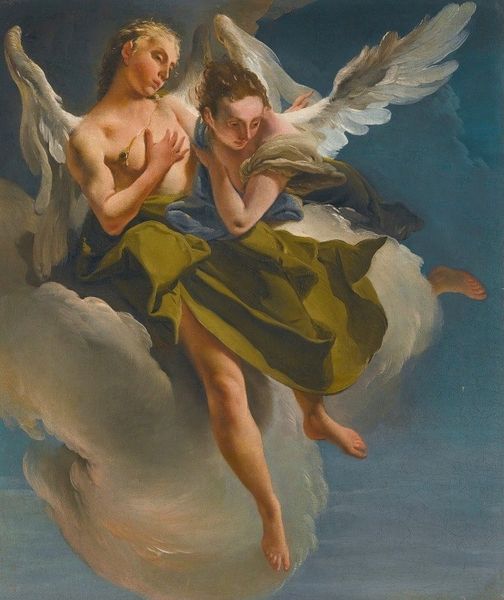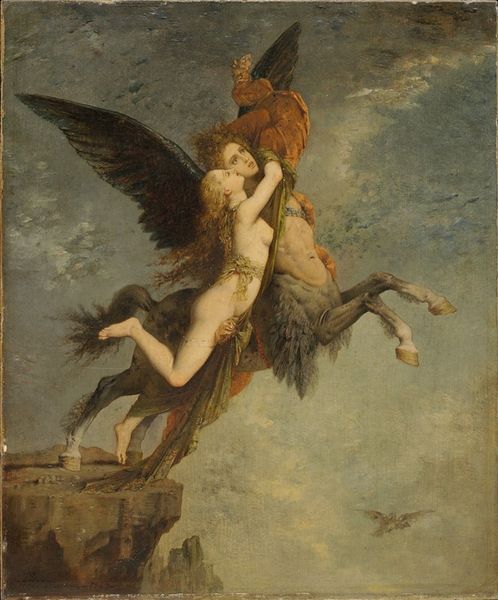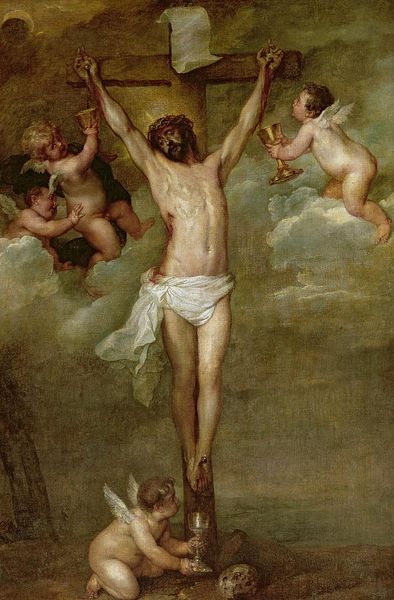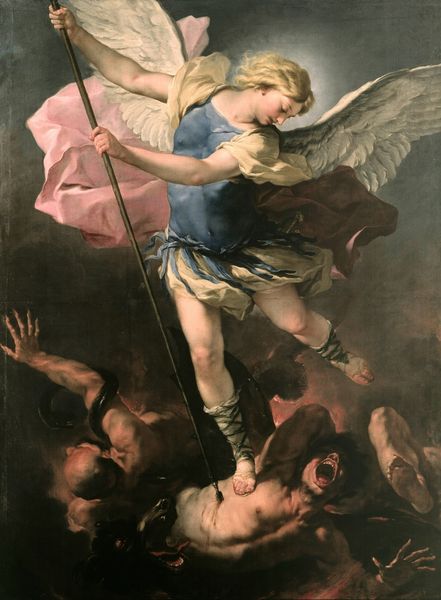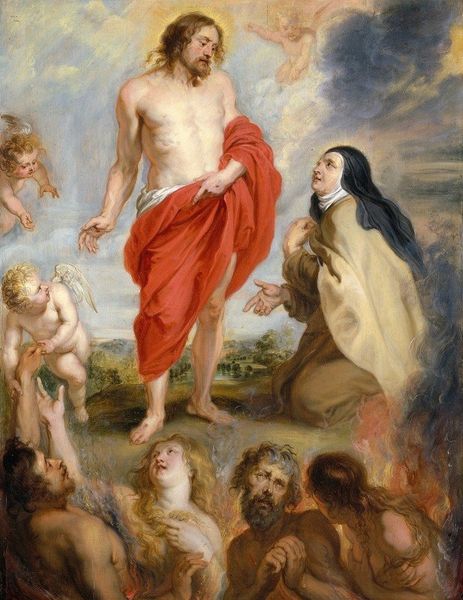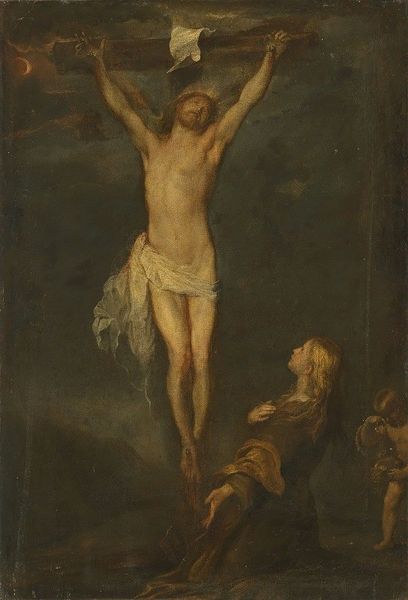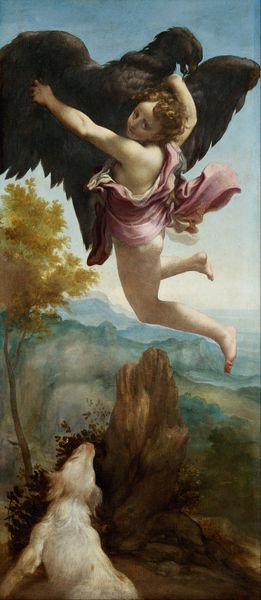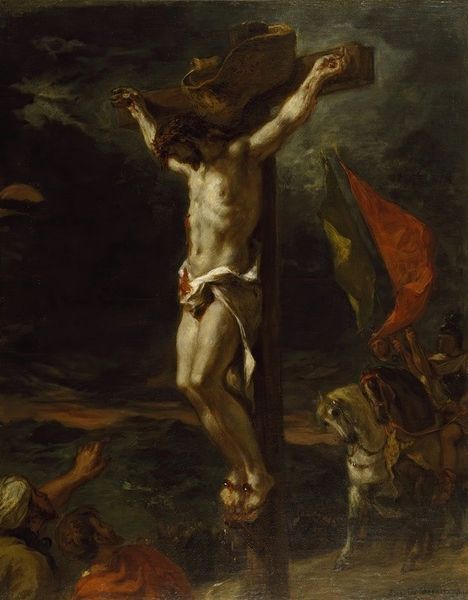
oil-paint
#
allegory
#
baroque
#
oil-paint
#
figuration
#
oil painting
#
history-painting
#
nude
Copyright: Public Domain: Artvee
Editor: We're now looking at Guido Reni's oil painting, "Blessed Soul," created around 1640. It's quite ethereal, with the figure seeming to ascend into divine light. What can you tell us about the context in which Reni created this work? Curator: This piece comes from a period where the Catholic Church heavily utilized art as a tool of Counter-Reformation, seeking to reinforce religious fervor and display its power after the Protestant Reformation. Reni's depiction aligns with that aim, using the Baroque style, known for its dramatic and emotionally charged visuals, to portray religious themes. But this particular treatment of the "Blessed Soul" does offer a distinct visual style compared to more canonical examples, so do you think the public’s interpretation may have been affected by the change? Editor: That’s interesting. How might the societal expectations of religious art have influenced the painting's reception back then, compared to now? Curator: Well, during the 17th century, viewers would have instantly recognized and related to its allegorical messaging within established codes of representation for salvation. A focus was also centered around art's performative effect. The purpose was to move the beholder and stimulate pious contemplation. Nowadays, removed from those societal and devotional structures, people are potentially likely to concentrate more on elements such as its stylistic qualities or symbolic undercurrents. Its place within Baroque art, though, becomes crucial to contextualizing this painting. Editor: So, its reception today might shift from spiritual reflection to art historical analysis, potentially overlooking the religious impact it was intended to make? Curator: Precisely. Appreciating it fully involves acknowledging the dialogue between faith, power, and artistic expression during that transformative epoch. Thinking about this in modern times made me reflect more deeply about how people interpret visual narratives differently across generations and ideologies. Editor: I've gained a richer sense of its cultural and historical place. Thanks!
Comments
No comments
Be the first to comment and join the conversation on the ultimate creative platform.
